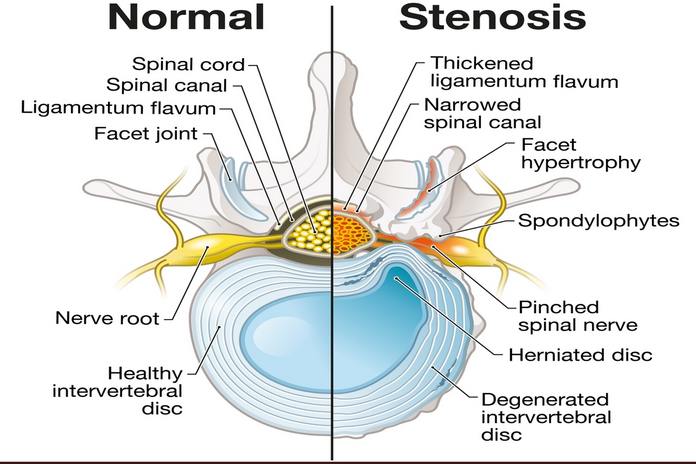Spinal Stenosis
Spinal stenosis affects the spinal cord and causes narrowing of the spinal canal. The spinal cord, as its name suggests, is a bundle of nerves that run down the middle of your back. It carries messages between your brain and the rest of your body. While anyone can develop spinal stenosis, it is most common in older adults. In fact, approximately two-thirds of people with spinal stenosis are over 65 years old. There is some evidence that spinal stenosis may occur more often in women than men. However, it is not clear if this is due to differences in anatomy or if women are more likely to seek treatment for their symptoms. (1)
There are three types of spinal stenosis: central canal stenosis, lateral recess stenosis, and foramina stenosis. Central canal stenosis is the most common type. It occurs when the central canal in the spinal cord gets narrower. Spinal stenosis can occur at any level of the spine, but is most common in the lower back and neck.
The condition is typically caused by age-related changes in the spine, such as arthritis or bone spurs. As people age, the discs between the vertebrae may shrink, which can narrow the space within the spinal column. These changes can cause the spinal canal to narrow, which puts pressure on the spinal cord and nerve roots. The symptoms of can vary from person to person, and may come and go over time. However, some of the most common symptoms – depending on the location of the stenosis – include pain in the back or neck, numbness or tingling in the arms or legs, weakness in the arms or legs, and difficulty walking.

In severe cases, spinal stenosis can also cause problems with bladder or bowel function. There is no cure for spinal stenosis, but there are treatments available that can help relieve symptoms. These treatments may include medications, physical therapy, or surgery. A new study suggests that surgery may be better than nonsurgical treatment for people with this condition.
The study looked at more than 350 people with spinal stenosis. All of them were randomly assigned to receive either surgery or nonsurgical treatment. The results showed that people who had surgery were more likely to have significant improvement in their symptoms than those who didn’t have surgery.
These findings suggest that surgery may be the best option for people with spinal stenosis. However, more research is needed to confirm these results. We’ll discuss this and other effective treatment options for spinal stenosis in the treatment section.

